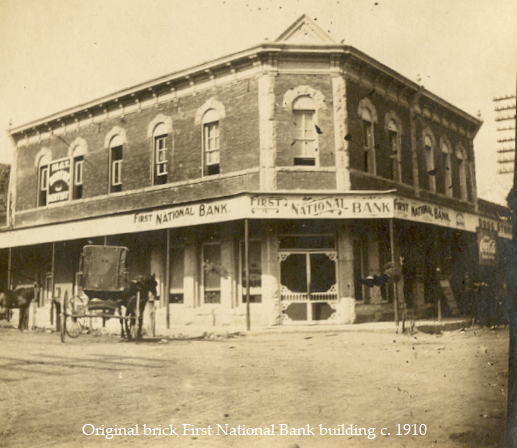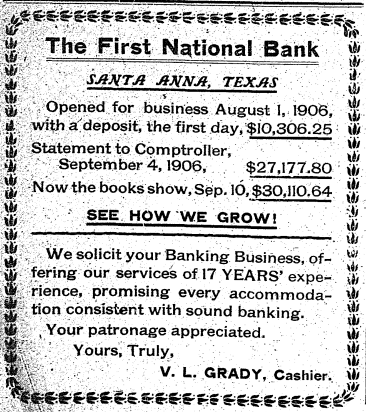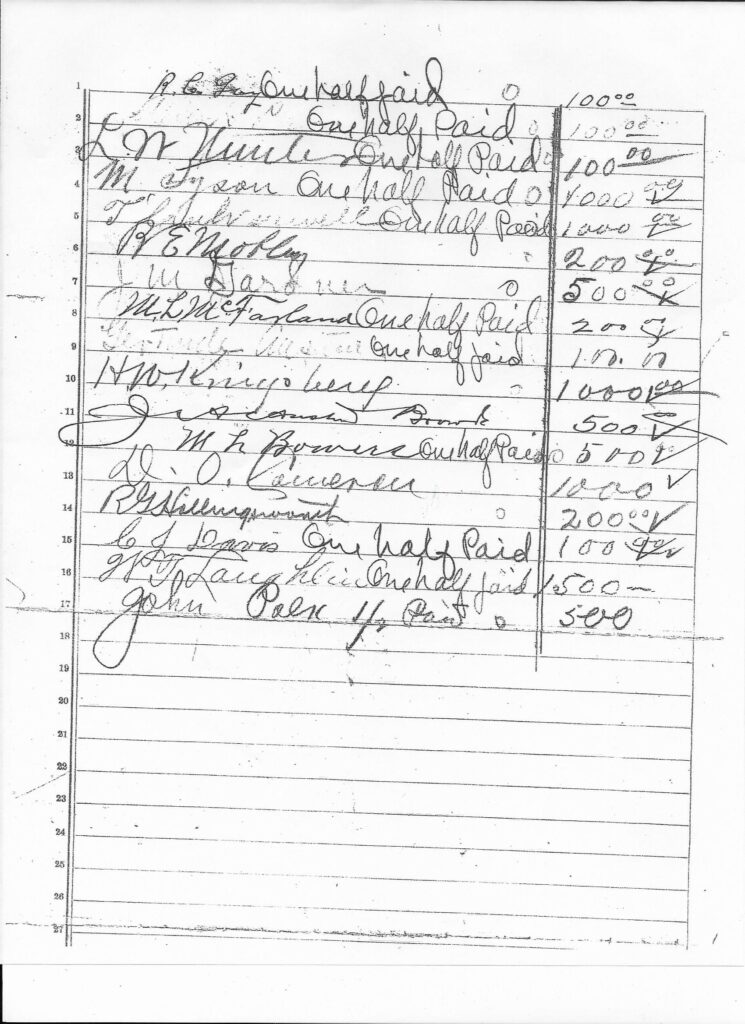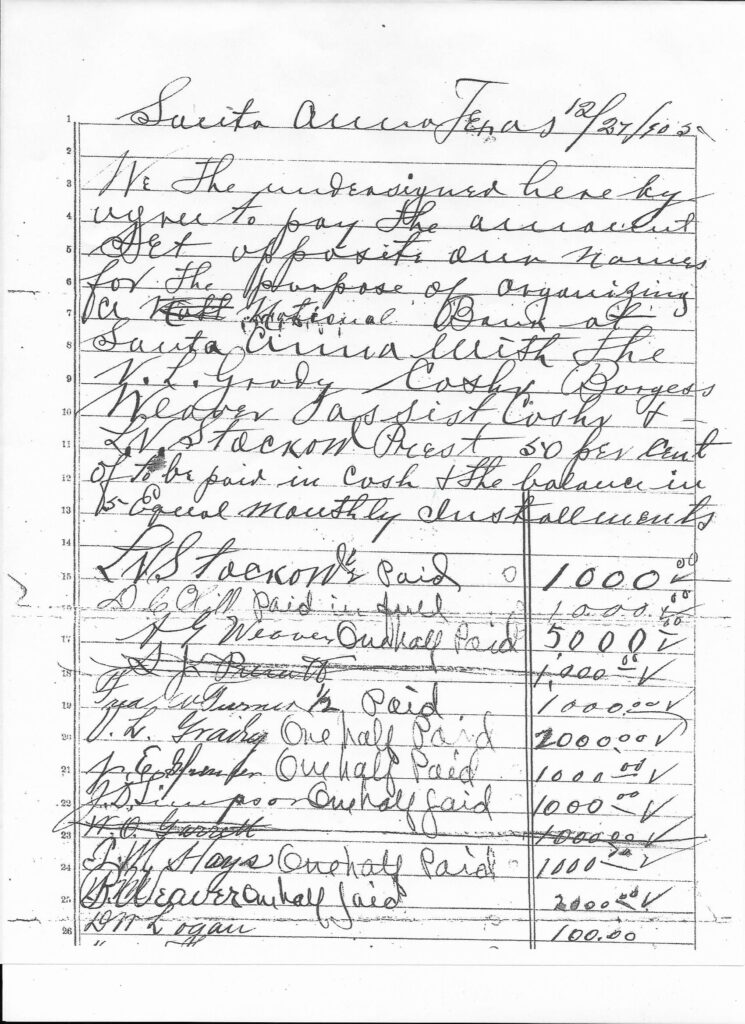Santa Anna National Bank
What we know now as Santa Anna National Bank did not start off by that name. At the turn of the nineteenth century every little town had one or more individuals who started private banks. From the research I have done, Santa Anna had at least three. In 1890, Marion Tyson started the first bank in Santa Anna—called The Citizens’ Bank– on one side of his general mercantile store. L. L. Shield moved his mercantile business from Trickham to Santa Anna and started his own bank inside it in 1894. W. R. Kelly made it three by starting a bank in the downstairs of W. R. Kelly & Co. Mercantile in 1889. These were banks owned and operated by individuals—not certified or chartered by the government.
Our community got its first fully chartered bank named First National Bank of Santa Anna, Texas in 1906. But there was plenty of work that went on prior to the opening of the bank. Thanks to a descendent of two of the charter organizers, we have written evidence of the work done to establish our bank. Burgess Weaver still has the hand-written document listing the organizers as well as the amount of cash each of them invested.
In December of 1905, thirty-two entrepreneurs invested from one hundred to as much as five thousand dollars to initiate the process of chartering a bank. By August 1, 1906, the task was accomplished when First National Bank opened its doors with $10,306.25 on deposit.
Chartering was the process these thirty-two citizens went through to create First National Bank of Santa Anna. After raising the capital, they filed the appropriate documents with the Office of the Comptroller of the Currency in Washington, D.C. that entitled them to form a chartered bank.
On forming the bank, the next order of business was to find a suitable building. In 1906, there were few brick or stone structures on our main street. At that time, Sam Phillips had a drug store in a wood frame building on the northeast corner of Wallis Avenue and Second Street. Phillips had bought the drug store from a Dr. Mathews when that block was called rat row because of all the crowded wood frame stores.
Soon after the founders of the bank secured title to the corner space, the wood frame building was demolished and the brick structure shown here was built in its place. As the picture shows, half of that building was leased to Sam Phillips as his drug store. The bank grew quickly, and the town was rapidly being converted from wood to masonry, so Sam Phillips moved his drug store three doors east to the middle of the block around 1923. Phillips’ move allowed the bank to double its physical size, making it the two corner lots on our main street.
In 1933, during the Great Depression, President Franklin Roosevelt declared a “banking holiday.” That basically meant that all banks were forced to close so that private banks and under capitalized banks could be shuttered for good. According to Rob Cheaney, current President of Santa Anna National Bank, both Santa Anna banks—the national and the state— were closed for a short time, and the State Bank did not reopen. I cannot find in the Santa Anna News if it was by choice or by government decree, but the First State Bank of Santa Anna ceased to exist. It was merged with the First National Bank to become Santa Anna National Bank. It has remained Santa Anna National Bank since then.
The list of the thirty-two brave pioneers who joined together to form Santa Anna National Bank in 1905 is as follows:
L. V. Stockard, D. C. Hill, A. G. Weaver, Fred W. Turner, V. L. Grady, J. E. Glasson, J. D. Simpson, T. M. Hays, Burgess Weaver, D. W. Logan, Harry Thompson, E. K. Thompson, J. W. Babb, W. R. Kelly, W. M. Riley, G. F. Jooher, R. C. Gay, L. W. Hunter, Marion Tyson, T. Culverwell, R. E. Mobley, J. M. Gardner, M. L. McFarland, Gertrude Austin, H. W. Kingsbery, J. Brown, M. L. Bowers, D. O. Cawerder, R. G. Hollingsworth, C. J. Davis, W. T. Laughlin, and John Polk.
I’m glad these pioneers had the wisdom, foresight, and fortitude to do what it took to make Santa Anna a hub of trade and commerce that it became. Our city is one of a rare few West Texas cities to have a bank, much less one in top-notch financial shape.




